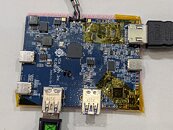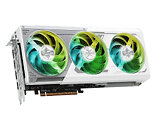
Red Hat & AMD Strengthen Strategic Collaboration - Leading to More Efficient GenAI
Red Hat, the world's leading provider of open source solutions, and AMD today announced a strategic collaboration to propel AI capabilities and optimize virtualized infrastructure. With this deepened alliance, Red Hat and AMD will expand customer choice across the hybrid cloud, from deploying optimized, efficient AI models to more cost-effectively modernizing traditional virtual machines (VMs). As workload demand and diversity continue to rise with the introduction of AI, organizations must have the capacity and resources to meet these escalating requirements. The average datacenter, however, is dedicated primarily to traditional IT systems, leaving little room to support intensive workloads such as AI. To answer this need, Red Hat and AMD are bringing together the power of Red Hat's industry-leading open source solutions with the comprehensive portfolio of AMD high-performance computing architectures.
AMD and Red Hat: Driving to more efficient generative AI
Red Hat and AMD are combining the power of Red Hat AI with the AMD portfolio of x86-based processors and GPU architectures to support optimized, cost-efficient and production-ready environments for AI-enabled workloads. AMD Instinct GPUs are now fully enabled on Red Hat OpenShift AI, empowering customers with the high-performing processing power necessary for AI deployments across the hybrid cloud without extreme resource requirements. In addition, using AMD Instinct MI300X GPUs with Red Hat Enterprise Linux AI, Red Hat and AMD conducted testing on Microsoft Azure ND MI300X v5 to successfully demonstrate AI inferencing for scaling small language models (SLMs) as well as large language models (LLM) deployed across multiple GPUs on a single VM, reducing the need to deploy across multiple VMs and reducing performance costs.
AMD and Red Hat: Driving to more efficient generative AI
Red Hat and AMD are combining the power of Red Hat AI with the AMD portfolio of x86-based processors and GPU architectures to support optimized, cost-efficient and production-ready environments for AI-enabled workloads. AMD Instinct GPUs are now fully enabled on Red Hat OpenShift AI, empowering customers with the high-performing processing power necessary for AI deployments across the hybrid cloud without extreme resource requirements. In addition, using AMD Instinct MI300X GPUs with Red Hat Enterprise Linux AI, Red Hat and AMD conducted testing on Microsoft Azure ND MI300X v5 to successfully demonstrate AI inferencing for scaling small language models (SLMs) as well as large language models (LLM) deployed across multiple GPUs on a single VM, reducing the need to deploy across multiple VMs and reducing performance costs.
























































































